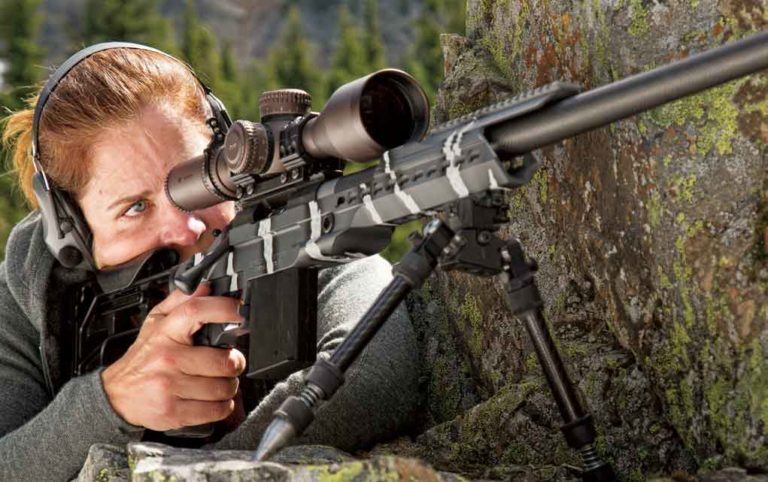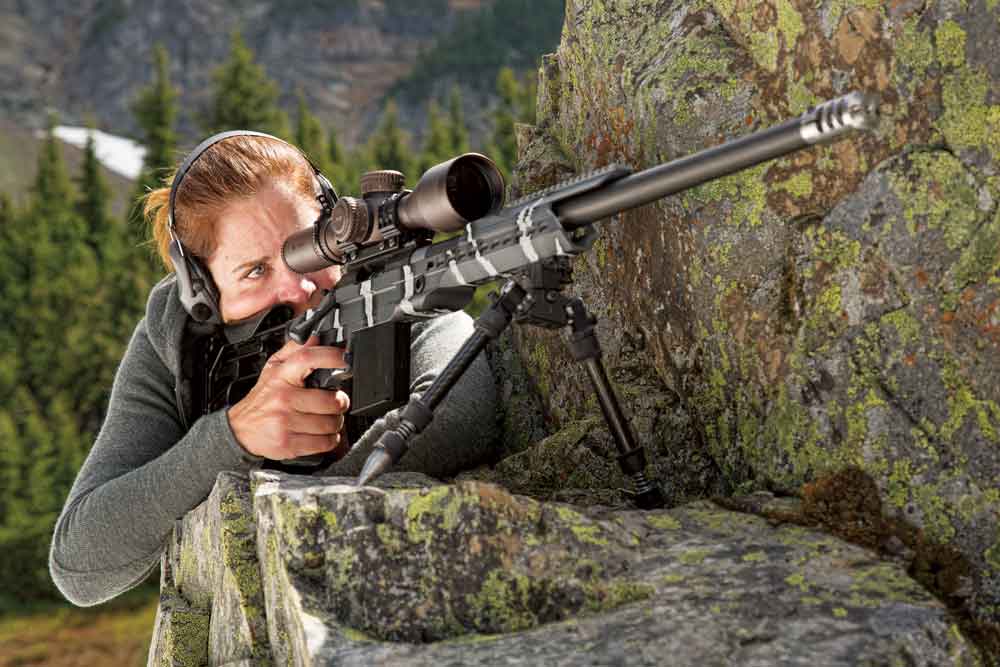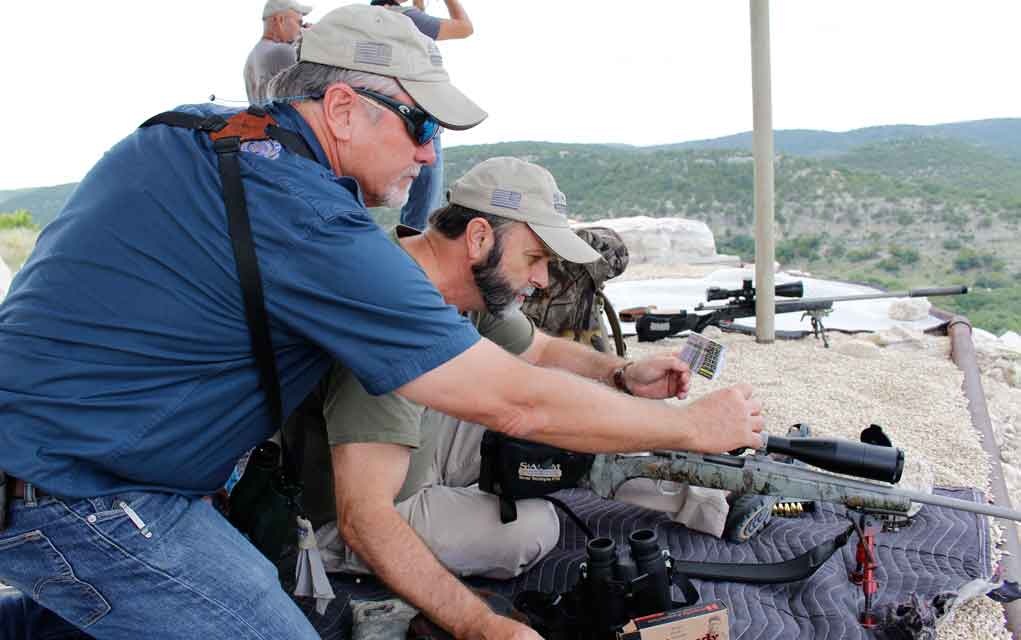
Gravity has an inordinate effect on a bullet's flight path. But because it's consistent, gravity can be easily overcome to make an accurate shot.
- The biggest accuracy variable to account for is gravity.
- Gravity begins to pull the bullet down the moment it leaves the barrel.
- Determine bullet drop at each distance to predict bullet travel (if speed stays constant).
Accurately hitting a target, especially at long range, requires the mastery of two skills:
1) Determining the direction a bullet needs to be shot so that it hits the target
2) Shooting the bullet in the precise direction needed. It’s that simple.
The first skill involves knowing the path the bullet will take on its way to the target. This is mastered with knowledge, some math and correctly identifying certain variables like distance, wind and temperature — it's all about the conditions/environment.
The second skill involves firing the rifle when it's aimed exactly where it needs to be. This is mastered with lots of practice and proper employment of the fundamentals of shooting — it's all about you.

Obviously, there are many variables and fundamentals to learn about and master. But we'll start here.
A Bullet’s Path
Bullets don’t travel in a straight line to the target. If they did, then long-range shooting would be easy, and it wouldn’t even be a thing that people discussed, practiced or learned about — shooting at a target 1 yard away and 1,000 yards away would be exactly the same. On second thought, maybe it’s a good thing that bullets don’t travel in a straight line. After all, mastering long-range shooting is very rewarding.
When a bullet leaves a rifle, there are many variables that change its path. The biggest effect on a bullet’s path is also the easiest to account for: gravity.
Gravity
The moment a bullet leaves the barrel, gravity starts to pull the bullet down off of its original path. Yes, you read that correctly. Bullets fall the moment they leave the barrel. If that seems odd to you, then you probably already know that the bullet travels in an arc on its way to the target. Wait a minute … how can the bullet fall immediately and also travel in an arc, which means it gets further from the ground at first before it falls back to the target? Simple — your barrel is angled upward even though your scope is looking straight at the target. Therefore, the original path of your bullet is a straight line at an upward angle.

The bullet, because of gravity, immediately starts to fall from its original path. Because objects fall faster the longer they fall (up to a certain point), the bullet falls faster and more off of its original path the longer it travels. This is what makes the arc path to the target — the bullet falling farther and faster off of its original path.
Can Your Bullet “Out-Run” Gravity?
At 100 yards, gravity absolutely has an effect on the bullet. But, it doesn’t affect it much because most rifle bullets get to a 100-yard target very quickly, and therefore they don’t have much time to fall.
The distance a bullet falls due to gravity is partly based on how fast the bullet is traveling — but not for the reason you might think. A fast-moving bullet does not somehow resist the effect of gravity because it has momentum as it flies forward. In fact, if you dropped a bullet from your hand from the same height and at the exact same time as you fired a bullet from a perfectly level rifle barrel, which bullet will hit the ground first? They will both hit the ground at the exact same time. The fact that one bullet was traveling horizontally at 3,000 fps has no effect on that bullet falling due to gravity.
The speed of the bullet, however, does have an effect on how much the bullet falls before it hits a certain target because of the time it takes to get to the target.
Objects fall due to gravity at an acceleration rate of 9.8 m/s^2. This means that a bullet will be falling at a speed of 9.8 m/s at the end of its first second of falling. It will then increase its speed an additional 9.8 m/s for every additional second it falls. Therefore, a bullet not only falls farther the longer it travels to the target, it falls farther/faster each additional second!
This means that a bullet that can get to a target in half the time will fall less than half the distance of a bullet that takes twice as long to get to a target. (Remember, it’ll fall more in the second half of its flight).
Biggest Effect
Gravity affects a bullet’s path more than any other variable (except for that tree branch that you didn’t see, of course). Every 100 yards the bullet travels, it falls more and more. This isn’t just because of the fact that the bullet is falling faster the longer it flies: it's also because the bullet is slowing down due to air resistance (yes, these are related).
For example, the bullet travels from 100 yards to 200 yards much faster than it travels from 900 yards to 1,000 yards. Even if the bullet were still falling at the same speed between these two points (it’s not — it’s falling faster), then it would have more time to fall at the farther distances.

This is why my .308 Winchester bullet only falls 4 inches from 100 yards to 200 yards, and it falls a little over 100 inches from 900 yards to 1,000 yards. Trust me, except for hitting something in flight or shooting in a tornado, nothing else is going to move your bullet’s path over 100 inches within 100 yards of travel.
Easiest To Account For
I have some good news: Once you figure out how much your particular bullet will drop for each distance, you can record the information and use it again! Gravity will affect your bullet the same no matter where you are as long as your bullet is traveling at the same speed.
Editor's Note: This article original appeared in the June 2017 issue of Gun Digest the Magazine.

Next Step: Get your FREE Printable Target Pack
Enhance your shooting precision with our 62 MOA Targets, perfect for rifles and handguns. Crafted in collaboration with Storm Tactical for accuracy and versatility.
Subscribe to the Gun Digest email newsletter and get your downloadable target pack sent straight to your inbox. Stay updated with the latest firearms info in the industry.

![Best Concealed Carry Guns In 2025 [Field Tested] Wilson Combat EDC X9S 1](https://gundigest.com/wp-content/uploads/Wilson-Combat-EDC-X9S-1-324x160.jpg)


![Best 9mm Carbine: Affordable PCCs [Tested] Ruger Carbine Shooting](https://gundigest.com/wp-content/uploads/Ruger-Carbine-Shooting-100x70.jpg)
![Best AR-15: Top Options Available Today [Field Tested] Harrington and Richardson PSA XM177E2 feature](https://gundigest.com/wp-content/uploads/Harrington-and-Richardson-PSA-XM177E2-feature-100x70.jpg)
